For A Mortician’s Tale players, this is a reminder to learn about funerals, like etiquette, traditions, green burial, etc. from Funerals Monthly.
Etiquette
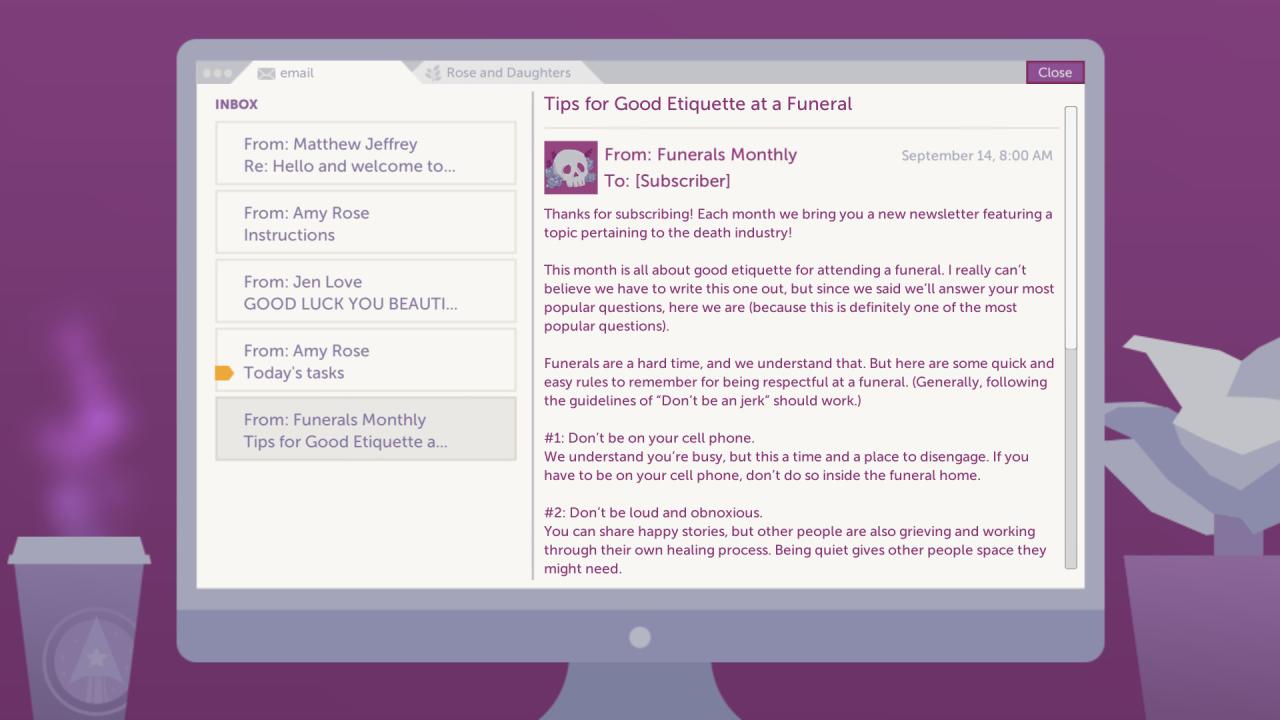
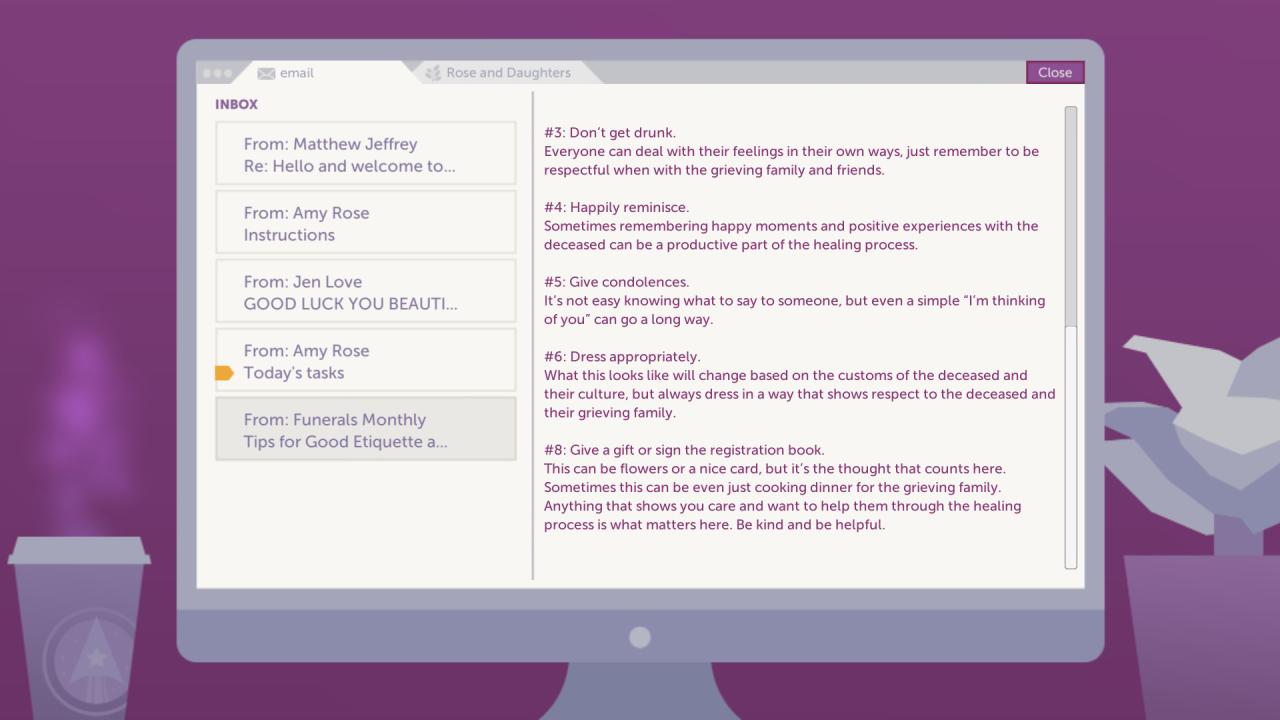
Thanks for subscribing! Each month we bring you a new newsletter featuring a topic pertaining to the death industry!
This month is all about good etiquette for attending a funeral. I really can’t believe we have to write this one out, but since we said we’ll answer your most popular questions, here we are (because this is definitely one of the most popular questions).
Funerals are a hard time, and we understand that. But here are some quick and easy rules to remember for being respectful at a funeral. (Generally, following the guidelines of “Don’t be a jerk” should work.)
#1: Don’t be on your cell phone.
We understand you’re busy, but this a time and a place to disengage. If you have to be on your cell phone, don’t do so inside the funeral home.#2: Don’t be loud and obnoxious.
You can share happy stories, but other people are also grieving and working through their own healing process. Being quiet gives other people space they might need.#3: Don’t get drunk.
Everyone can deal with their feelings in their own ways, just remember to be respectful when with the grieving family and friends.#4: Happy reminisce.
Sometimes remembering happy moments and positive experiences with the deceased can be a productive part of the healing process.#5: Give condolences.
It’s not easy knowing what to say to someone, but even a simple “I’m thinking of you” can go a long way.#6: Dress appropriately.
What this looks like will change based on the customs of the deceased and their culture, but always dress in a way that shows respect to the deceased and their grieving family.#7: Give a gift or sign the registration book.
This can be flowers or a nice card, but it’s the thought that counts here. Sometimes this can be even just cooking dinner for the grieving family. Anything that shows you care and want to help them through the healing process is what matters here. Be kind and be helpful.
Avoid These Words
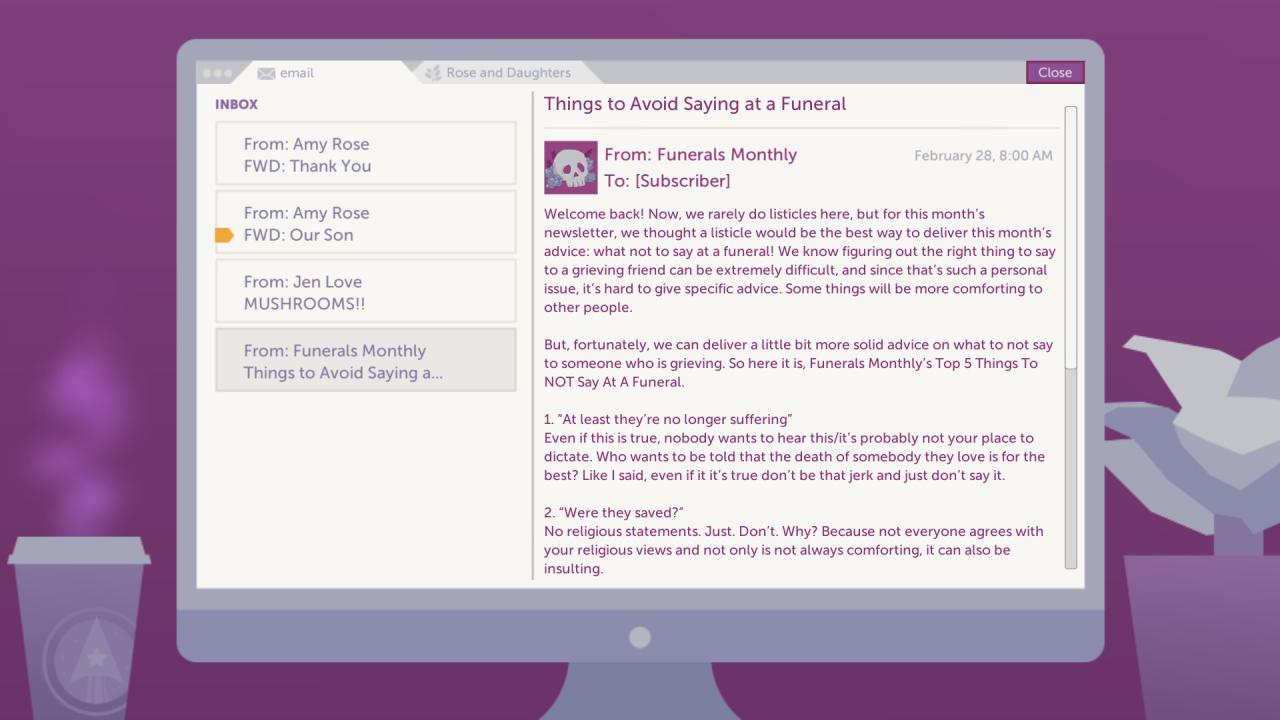
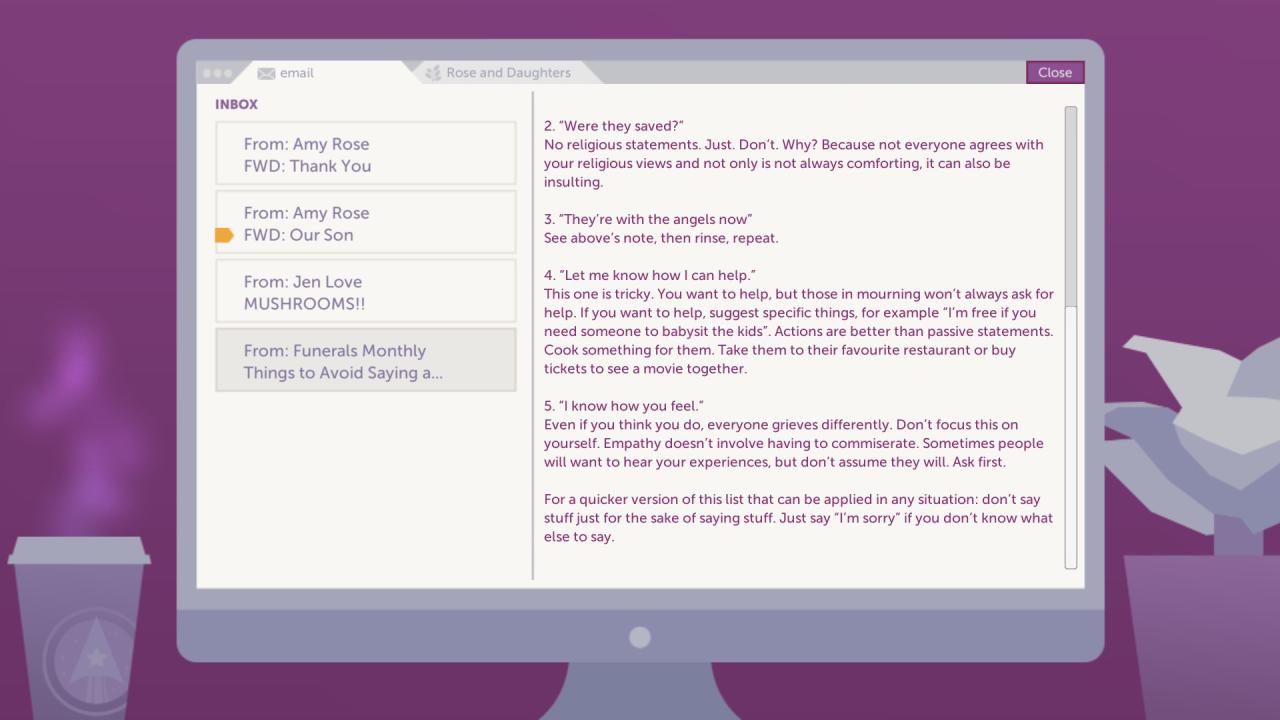
Welcome back! Now, we rarely do listicles here, but for this month’s newsletter, we thought a listicle would be the best way to deliver this month’s advice: what not to say at a funeral! We know figuring out the right thing to say to a grieving friend can be extremely difficult, and since that’s such a personal issue, it’s hard to give specific advice. Some things will be more comforting to other people.
But, fortunately, we can deliver a little bit more solid advice on what to not say to someone who is grieving. So here it is, Funeral Monthly’s Top 5 Things To NOT Say At A Funeral.
1. “At least they’re no longer suffering”
Even if this is true, nobody wants to hear this/it’s probably not your place to dictate. Who wants to be told that the death of somebody they love is for the best? Like I said, even if it it’s true don’t be that jerk and just don’t say it.2. “Were they saved?”
No religious statements. Just. Don’t. Why? Because not everyone agrees with your religious views and not only is not always comforting, it can also be insulting.3. “They’re with the angels now”
See above’s note, then rinse, repeat.4. “Let me know how I can help.”
This one is tricky. You want to help, but those in mourning won’t always ask for help. If you want to help, suggest specific things, for example “I’m free if you need someone to babysit the kids”. Actions are better than passive statements. Cook something for them. Take them to their favourite restaurant or buy tickets to see a movie together.5. “I know how you feel.”
Even if you think you do, everyone grieves differently. Don’t focus this on yourself. Empathy doesn’t involve having to commiserate. Sometimes people will want to hear your experiences, but don’t assume they will. Ask first.For a quicker version of this list that can be applied in any situation: don’t say stuff just for the sake of saying stuff. Just say “I’m sorry” if you don’t know what else to say.
What to Wear
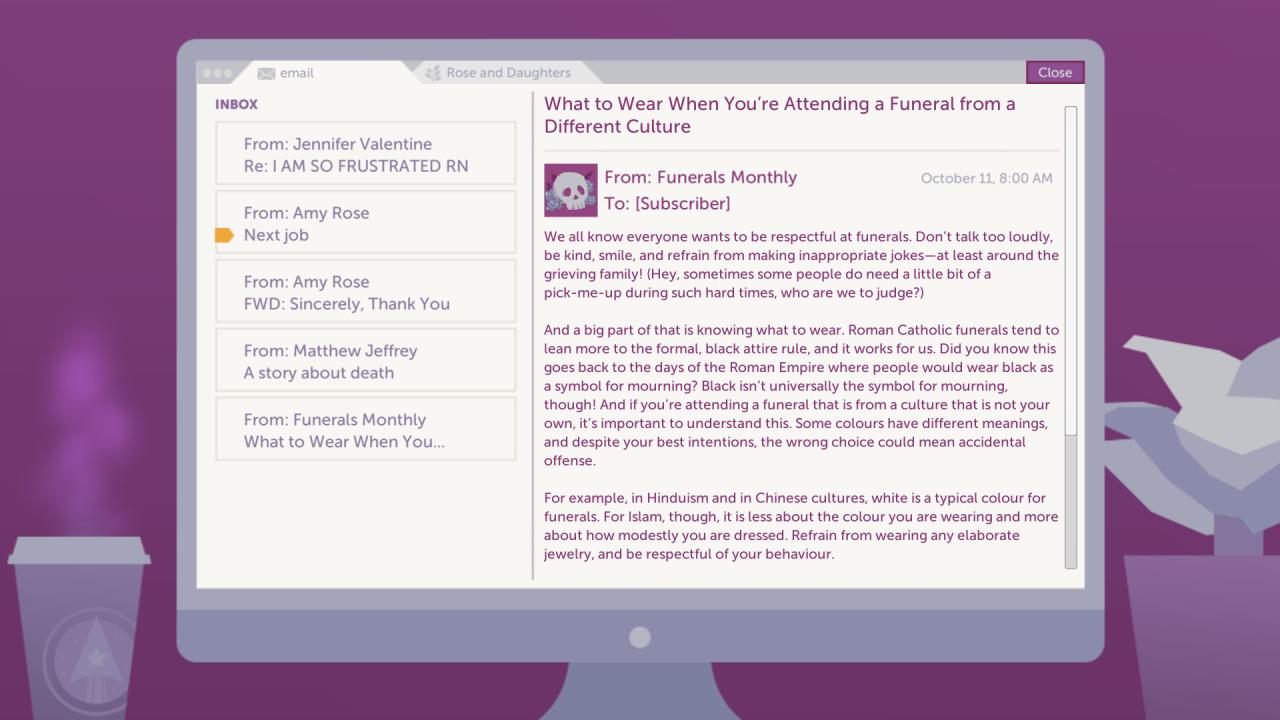
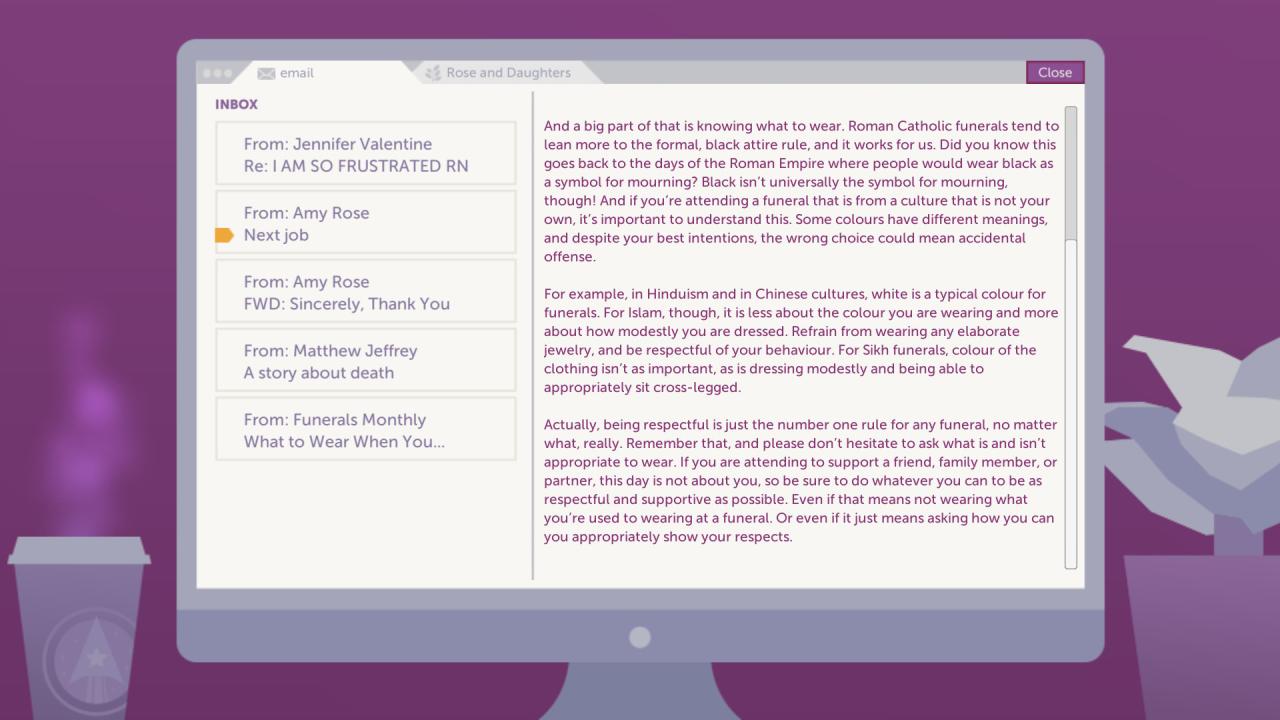
We all know everyone wants to be respectful at funerals. Don’t talk too loudly, be kind, smile, and refrain from making inappropriate jokes – at least around the grieving family! (Hey, sometimes some people do need a little bit of a pick – me – up during such hard times, who are we to judge?)
And a big part of that is knowing what to wear, Roman Catholic funerals tend to lean more to the formal, black attire rule, and it works for us. Did you know this goes back to the days of the Roman Empire where people would wear black as a symbol for mourning? Black isn’t universally the symbol for mourning, though! And if you’re attending a funeral that is from a culture that is not your own, it’s important to understand this. Some colours have different meanings, and despite your best intentions, the wrong choice could mean accidental offense.
For example, in Hinduism and in Chinese cultures, white is a typical colour for funerals. For Islam, though, it is less about the colour you are wearing and more about how modestly you are dressed. Refrain from wearing any elaborate jewelry, and be respectful of your behaviour. For Sikh funerals, colour of the clothing isn’t as important, as is dressing modestly and being able to appropriately sit cross – legged.
Actually, being respectful is just the number one rule for any funeral, no matter what, really. Remember that, and please don’t hesitate to ask what is and isn’t appropriate to wear. If you are attending to support a friend, family member, or partner, this day is not about you, so be sure to do whatever you can to be as respectful and supportive as possible. Even if that means not wearing what you’re used to wearing at a funeral. Or even if it just means asking how you can you appropriately show your respects.
Traditions
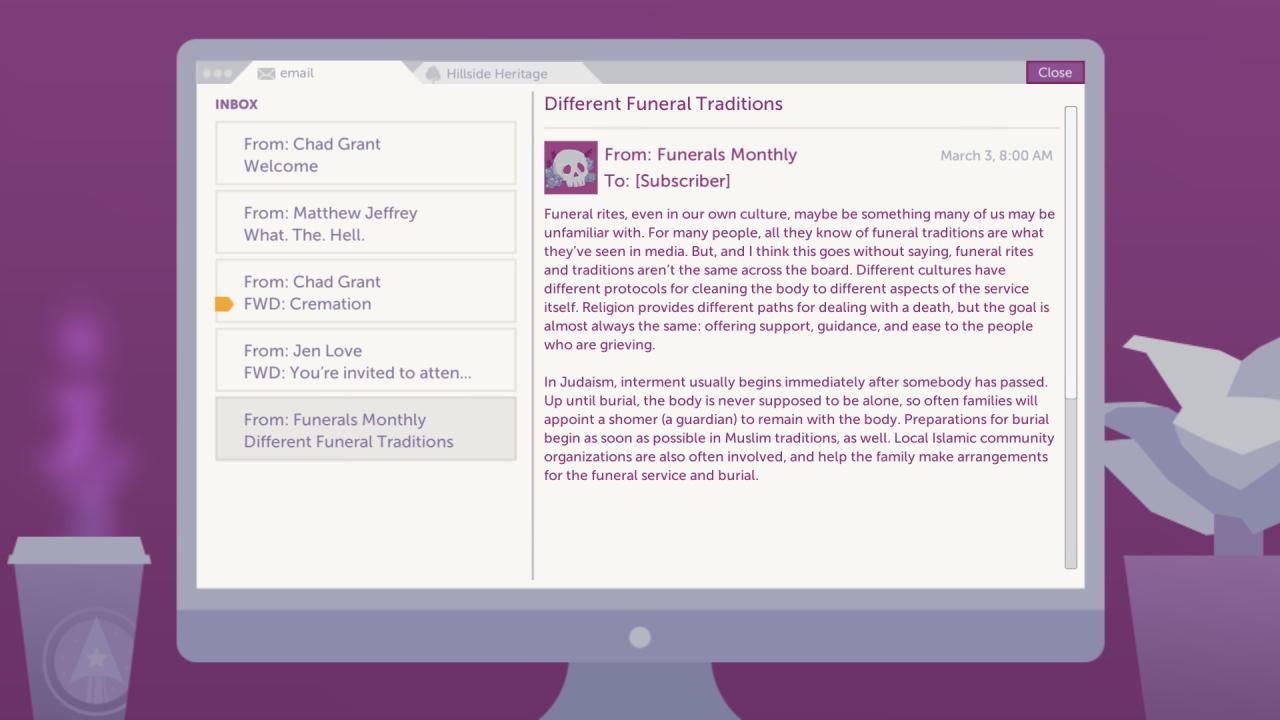
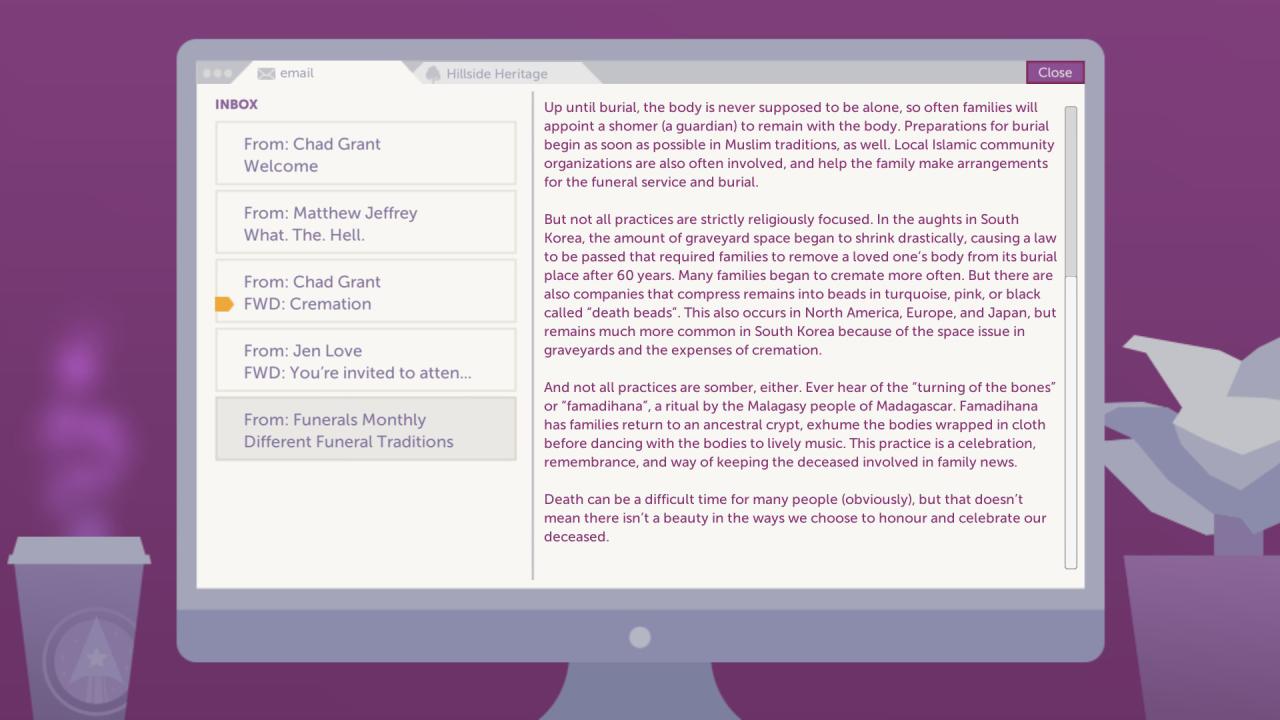
Funeral rites, even in our own culture, maybe be something many of us may be unfamiliar with. For many people, all they know of funeral traditions are what they’ve seen in media. But, and I think this goes without saying, funeral rites and traditions aren’t the same across the board. Different cultures have different protocols for cleaning the body to different aspects of the service itself. Religion provides different paths for dealing with a death, but the goal is almost always the same: offering support, guidance, and ease to the people who are grieving.
In Judaism, interment usually begins immediately after somebody has passed. Up until burial, the body is never supposed to be alone, so often families will appoint a shomer (a guardian) to remain with the body. Preparations for burial begin as soon as possible in Muslim traditions, as well. Local Islamic community organizations are also often involved, and help the family make arrangements for the funeral service and burial.
But not all practices are strictly religiously focused. In the aughts in South Korea, the amount of graveyard space began to shrink drastically, causing a law to be passed that required families to remove a loved one’s body from its burial place after 60 years. Many families began to cremate more often. But there are also companies that compress remains into beads in turquoise, pink, or black called “death beads”. This also occurs in North America, Europe, and Japan, but remains much more common in South Korea because of the space issue in graveyards and the expenses of cremation.
And not all practices are somber, either. Ever hear of the “turning of the bones” or “famadihana”, a ritual by the Malagasy people of Madagascar. Famadihana has families return to an ancestral crypt, exhume the bodies wrapped in cloth before dancing with the bodies to lively music. This practice is a celebration, remembrance, and way of keeping the deceased involved in family news.
Death can be a difficult time for many people (obviously), but that doesn’t mean there isn’t a beauty in the ways we choose to honour and celebrate our deceased.
LGBTQ
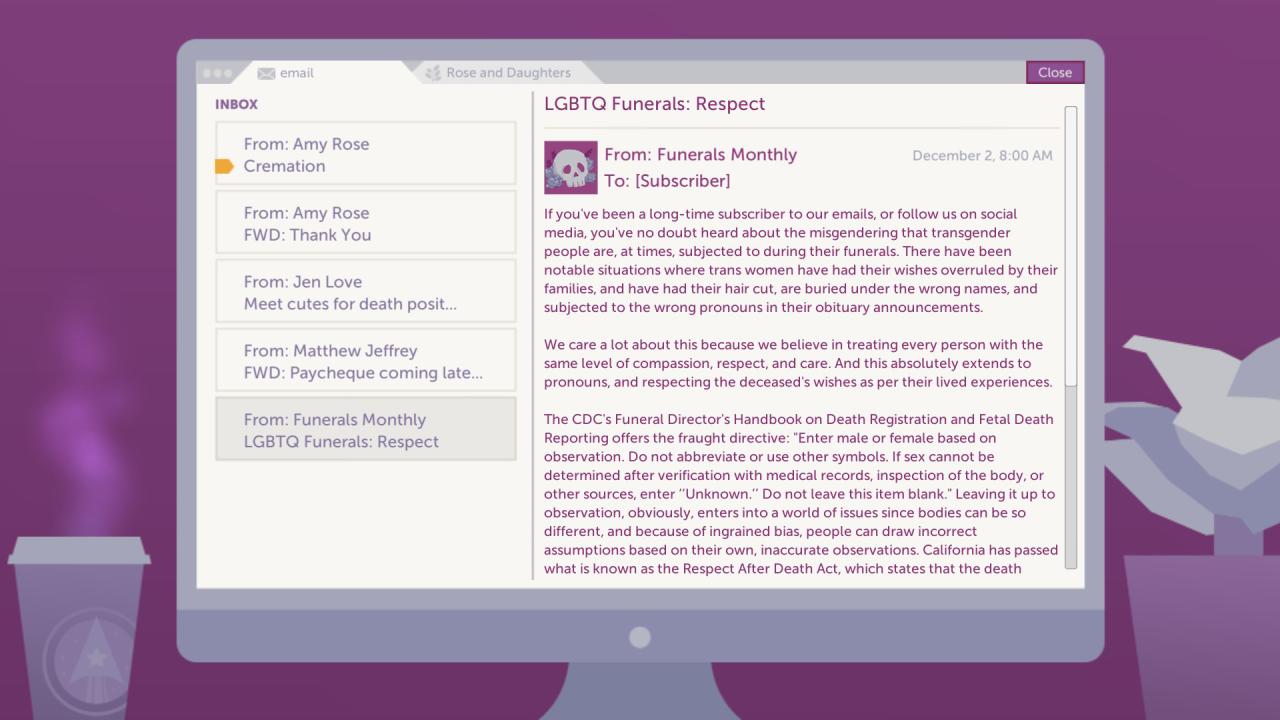
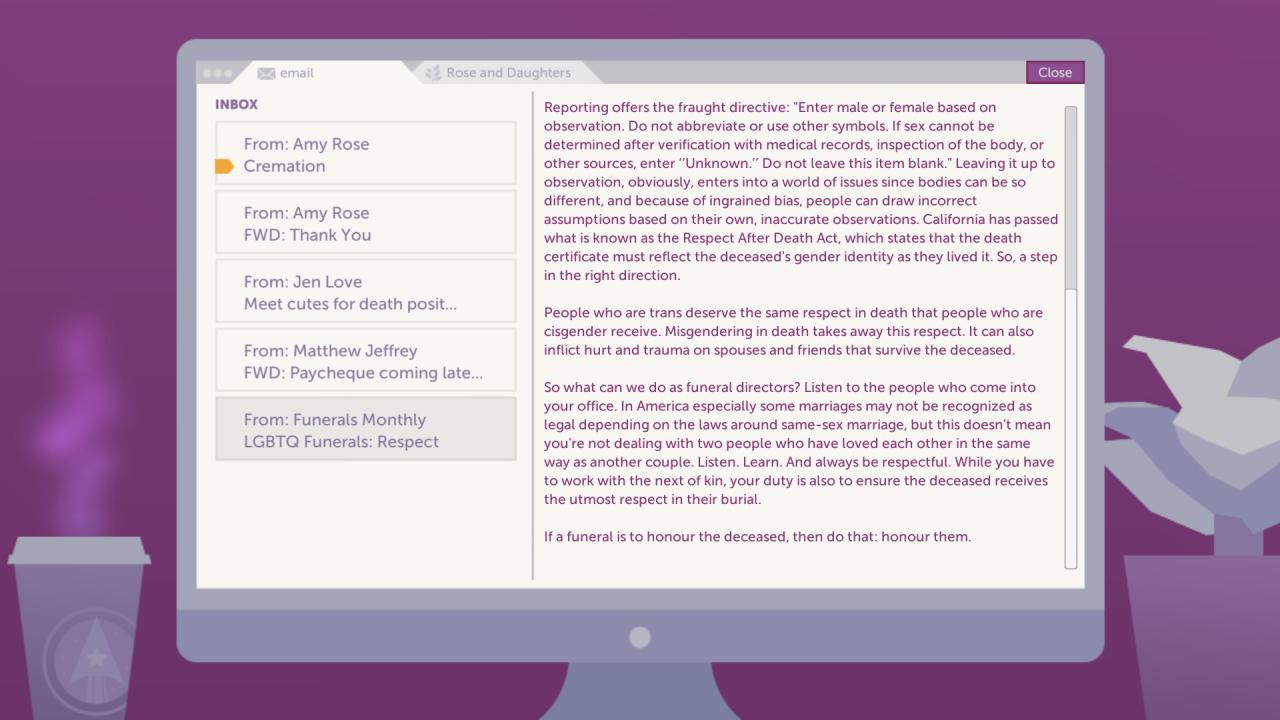
If you’ve been a long – time subscriber to our emails, or follow us on social media, you’ve no doubt heard about the misgendering that transgender people are, at times, subjected to during their funerals. There have been notable situations where trans women have had their wishes overruled by their families, and have had their hair cut, are buried under the wrong names, and subjected to the wrong pronouns in their obituary announcements.
We care a lot about this because we believe in treating every person with the same level of compassion, respect, and care. And this absolutely extends to pronouns, and respecting the deceased’s wishes as per their lived experiences.
The CDC’s Funeral Director’s Handbook on Death Registration and Fetal Death Reporting offers the fraught directive: “Enter male or female based on observation. Do not abbreviate or use other symbols. If sex cannot be determined after verification with medical records, inspection of the body, or other sources, enter ‘Unknown.’ Do not leave this item blank.” Leaving it up to observation, obviously, enters into a world of issues since bodies can be so different, and because of ingrained bias, people can draw incorrect assumptions based on their own, inaccurate observations. California has passed what is known as the Respect After Death Act, which states that the death certificate must reflect the deceased’s gender identity as they lived it. So, a step in the right direction.
People who are trans deserve the same respect in death that people who are cisgender receive. Misgendering in death takes away this respect. It can also inflict hurt and trauma on spouses and friends that survive the deceased.
So what can we do as funeral directors? Listen to the people who come into your office. In America especially some marriages may not be recognized as legal depending on the laws around same – sex marriage, but this doesn’t mean you’re not dealing with two people who have loved each other in the same way as another couple. Listen. Learn. And always be respectful. While you have to work with the next of kin, your duty is also to ensure the deceased receives the utmost respect in their burial.
If a funeral is to honour the deceased, then do that: honour them.
Green Burials
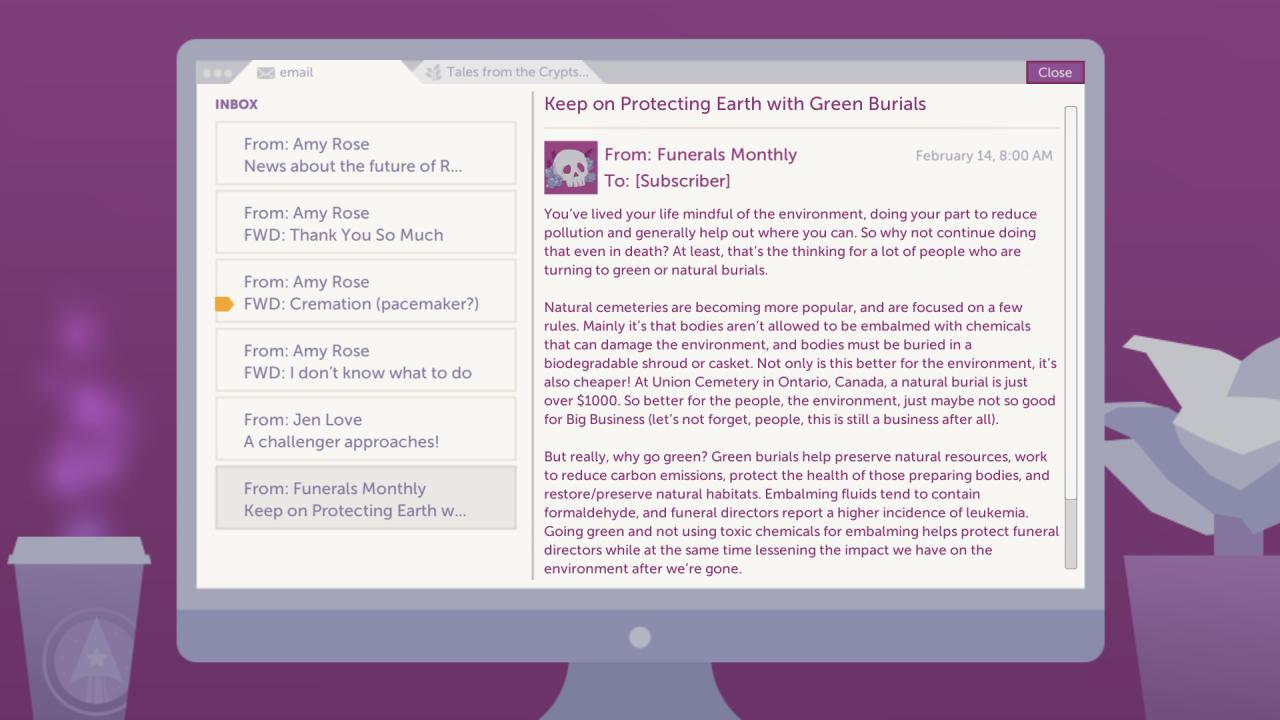
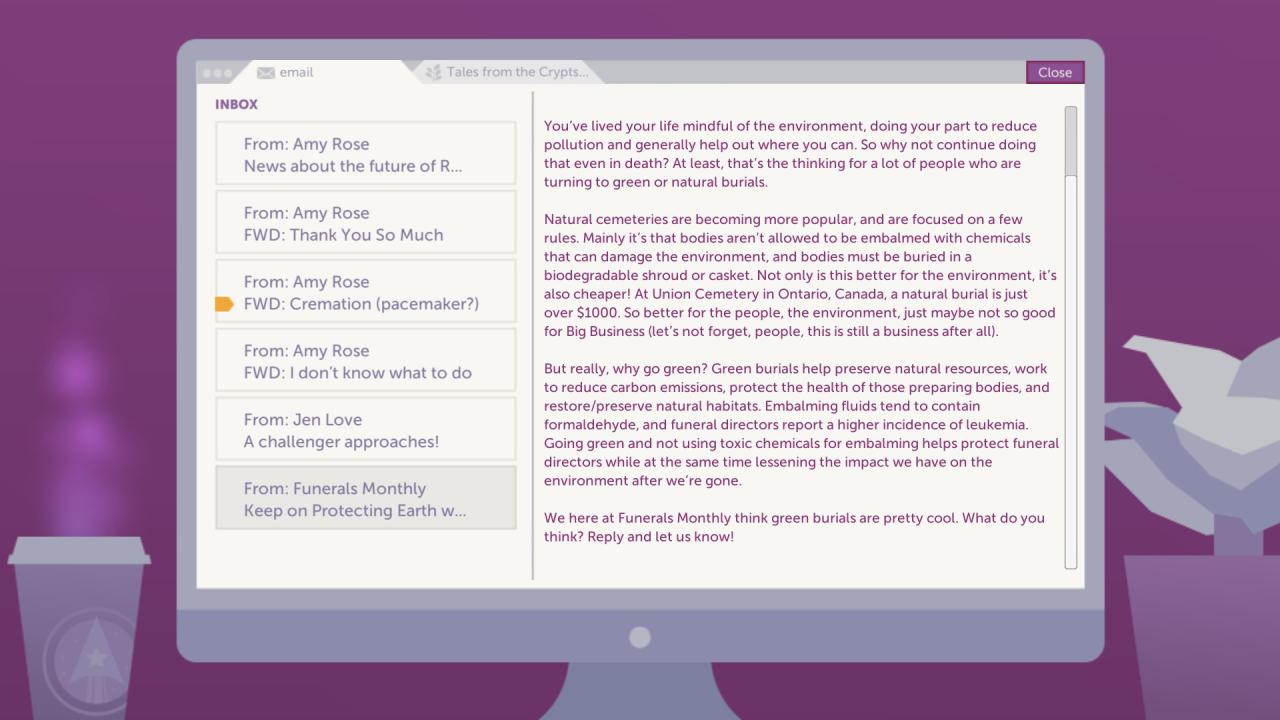
You’ve lived your life mindful of the environment, doing your part to reduce pollution and generally help out where you can. So why not continue doing that even in death? At least, that’s the thinking for a lot of people who are turning to green or natural burials.
Natural cemeteries are becoming more popular, and are focused on a few rules. Mainly it’s that bodies aren’t allowed to be embalmed with chemicals that can damage the environment, and bodies must be buried in a biodegradable shroud or casket. Not only is this better for the environment, it’s also cheaper! At Union Cemetery in Ontario, Canada, a natural burial is just over $1000. So better for the people, the environment, just maybe not so good for Big Business (let’s not forget, people, this is still a business after all).
But really, why go green? Green burials help preserve natural resources, work to reduce carbon emissions, protect the health of those preparing bodies, and restore/preserve natural habitats.
Embalming fluids tend to contain formaldehyde, and funeral directors report a higher incidence of leukemia. Going green and not using toxic chemicals for embalming helps protect funeral directors while at the same time lessening the impact we have on the environment after we’re gone.We here at Funerals Monthly think green burials are pretty cool. What do you think? Reply and let us know!
Home Funerals
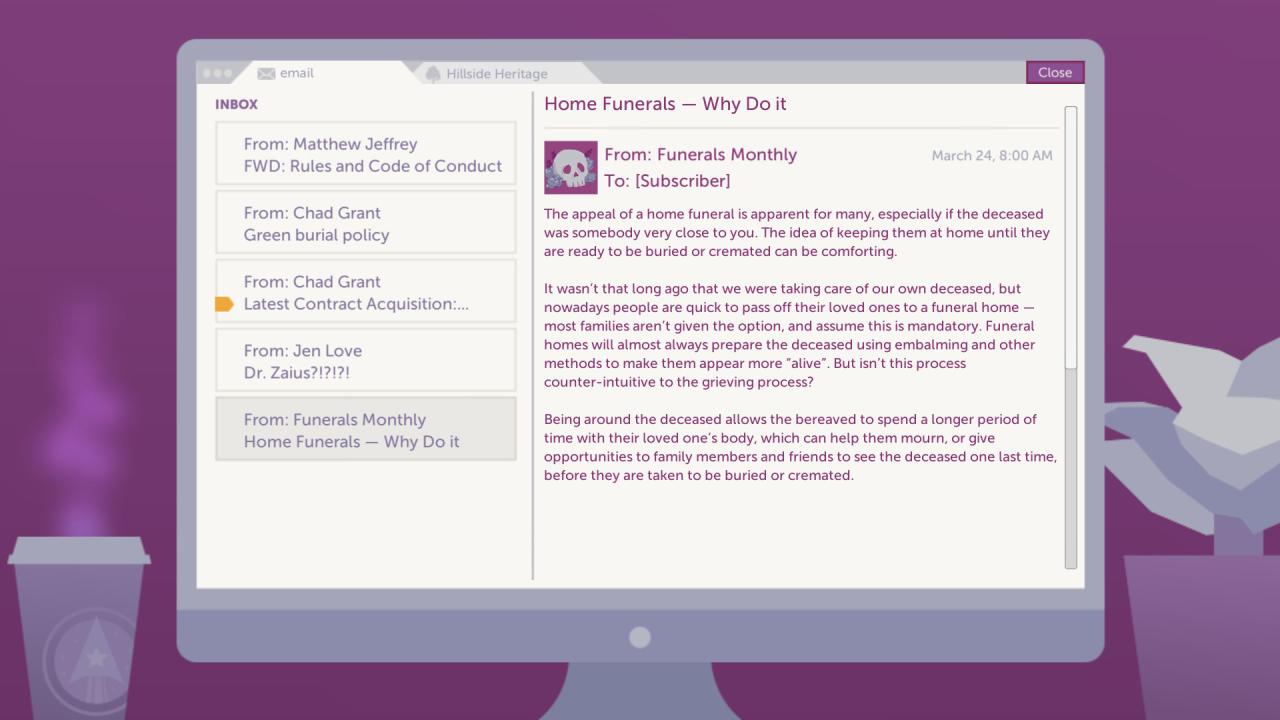
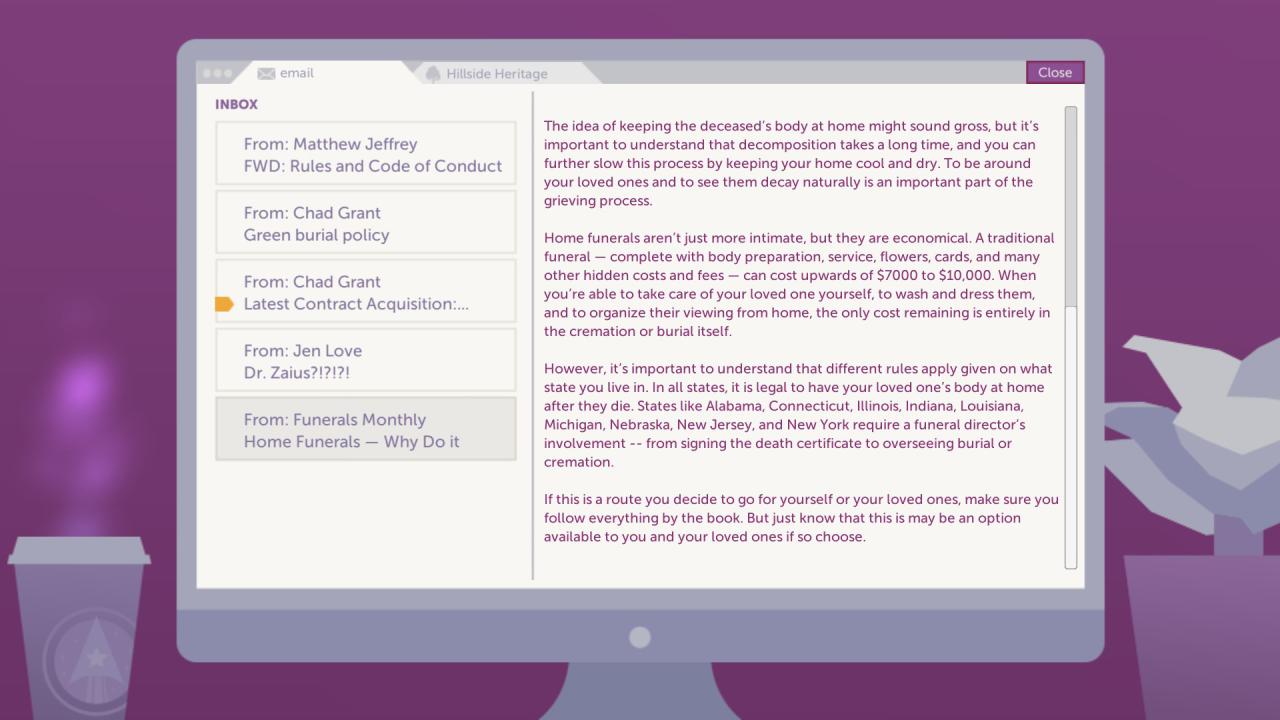
The appeal of a home funeral is apparent for many, especially if the deceased was somebody very close to you. The idea of keeping them at home until they are ready to be buried or cremated can be comforting.
It wasn’t that long ago that we were taking care of our own deceased, but nowadays people are quick to pass off their loved ones to a funeral home – most families aren’t given the option, and assume this is mandatory. Funeral homes will almost always prepare the deceased using embalming and other methods to make them appear more “alive”. But isn’t this process counter – intuitive to the grieving process?
Being around the deceased allows the bereaved to spend a longer period of time with their loved one’s body, which can help them mourn, or give opportunities to family members and friends to see the deceased one last time, before they are taken to be buried or cremated.
The idea of keeping the deceased’s body at home might sound gross, but it’s important to understand that decomposition takes a long time, and you can further slow this process by keeping your home cool and dry. To be around your loved ones and to see them decay naturally is an important part of the grieving process.Home funerals aren’t just more intimate, but they are economical. A traditional funeral – complete with body preparation, service, flowers, cards, and many other hidden costs and fees – can cost upwards of $7,000 to $10,000. When you’re able to take care of your loved one yourself, to wash and dress them, and to organize their viewing from home, the only cost remaining is entirely in the cremation or burial itself.
However, it’s important to understand that different rules apply given on what state you live in. In all states, it is legal to have your loved one’s body at home after they die. States like Alabama, Connecticut, Illinois, Indiana, Louisiana, Michigan, Nebraska, New Jersey, and New York require a funeral director’s involvement – from signing the death certificate to overseeing burial or cremation.
If this is a route you decide to go for yourself or your loved ones, make sure you follow everything by the book. But just know that this is may be an option available to you and your loved ones if so choose.
Water Cremation
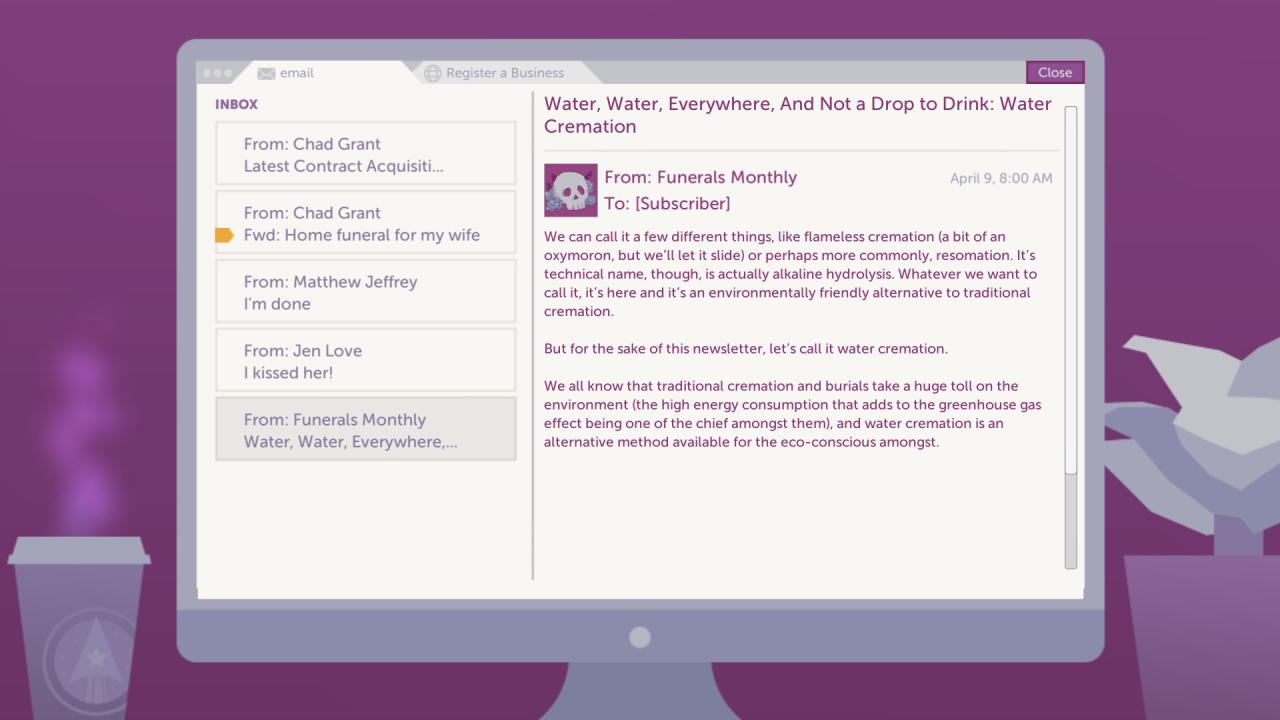
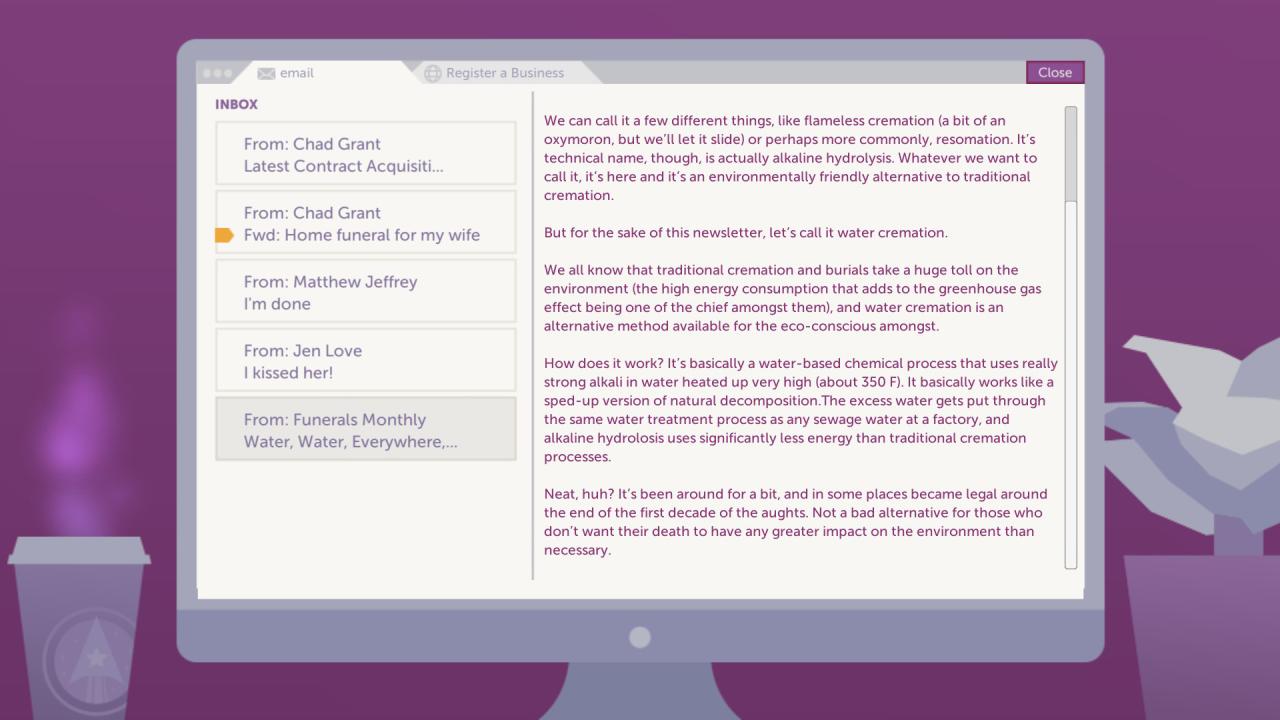
We can call it a few different things, like flameless cremation (a bit of an oxymoron, but we’ll let it slide) or perhaps more commonly, resomation. It’s technical name, though, is actually alkaline hydrolysis. Whatever we want to call it, it’s here and it’s an environmentally friendly alternative to traditional cremation.
But for the sake of this newsletter, let’s call it water cremation.
We all know that traditional cremation and burials take a huge toll on the environment (the high energy consumption that adds to the greenhouse gas effect being one of the chief amongst them), and water cremation is an alternative method available for the eco – conscious amongst.
How does it work? It’s basically a water – based chemical process that uses really strong alkali in water heated up very high (about 350F). It basically works like a sped – up version of natural decomposition. The excess water gets put through the same water treatment process as any sewage water at a factory, and alkaline hydrolysis uses significantly less energy than traditional cremation processes.
Neat, huh? It’s been around for a bit, and in some places became legal around the end of the first decade of the aughts. Not a bad alternative for those who don’t want their death to have any greater impact on the environment than necessary.
